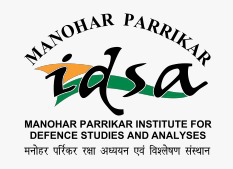Emerging India: Security and Foreign Policy Perspectives
Publishers: IDSA and Promilla & Co.
ISBN: 81-86019-51-0
Rs 795
US $ 30
- N. S. Sisodia , C Uday Bhaskar |
- 2005 |
- Book
Home » Book
Publishers: IDSA and Promilla & Co.
ISBN: 81-86019-51-0
Rs 795
US $ 30
Publishers: IDSA and Promilla & Co.
ISBN: 81-86019-50-02
Rs 1175
US $ 45
Publishers: Promilla & Co. and Bibliphile South Asia
ISBN: 81-85002-76-2
Rs. 295
US $ 14.95
Publisher: Academic Foundation
ISBN 13 : 978-81-7188-626-5
ISBN 10 : 81-7188-626-4
Rs. 895
US $ 69.95
The volume, divided into four sections, deals with strategic developments pertaining to Asia. Recognising the diverse 'push' and 'pull' factors impinging on a country's strategic posture, the volume starts off by dealing with issues which the Advisory Committee of Experts guiding this publication felt were of immediate relevance.
The 21st century has been described as the ‘Asian Century.’ Home to 60 per cent of the world’s population and accounting for one-fourth of its Gross Domestic Product, by 2050, Asia will also have three of the world’s largest economies—China, India, and Japan. A dynamic hub in this rising Asia is the Southeast Asian region—encompassing diverse countries, peoples and cultures. The 9th Asian Security Conference addressed a range of issues and trends affecting this crucial region and their implications for regional and Asian security.
IDSA Asian Strategic Review 2008, the second volume in the series of Annual Surveys revived by the Institute in the previous year, is divided into six sections.
For the last five decades artificial satellites are being used to perform diverse roles in astronomy, atmospheric studies and education. They have been found useful for reconnaissance, meteorology, navigation, communication and search & rescue.
The contemporary strategic context is increasingly defined by the rapid growth of major Asian economies and the rapidly increasing interest the major powers are evincing in the region. It has also resulted in a perceptible shift in power to the Asian continent.
This book represents an effort to go beyond state-centred views of energy security, bridging local perspectives on energy resources and global framing of energy as a security concern.



